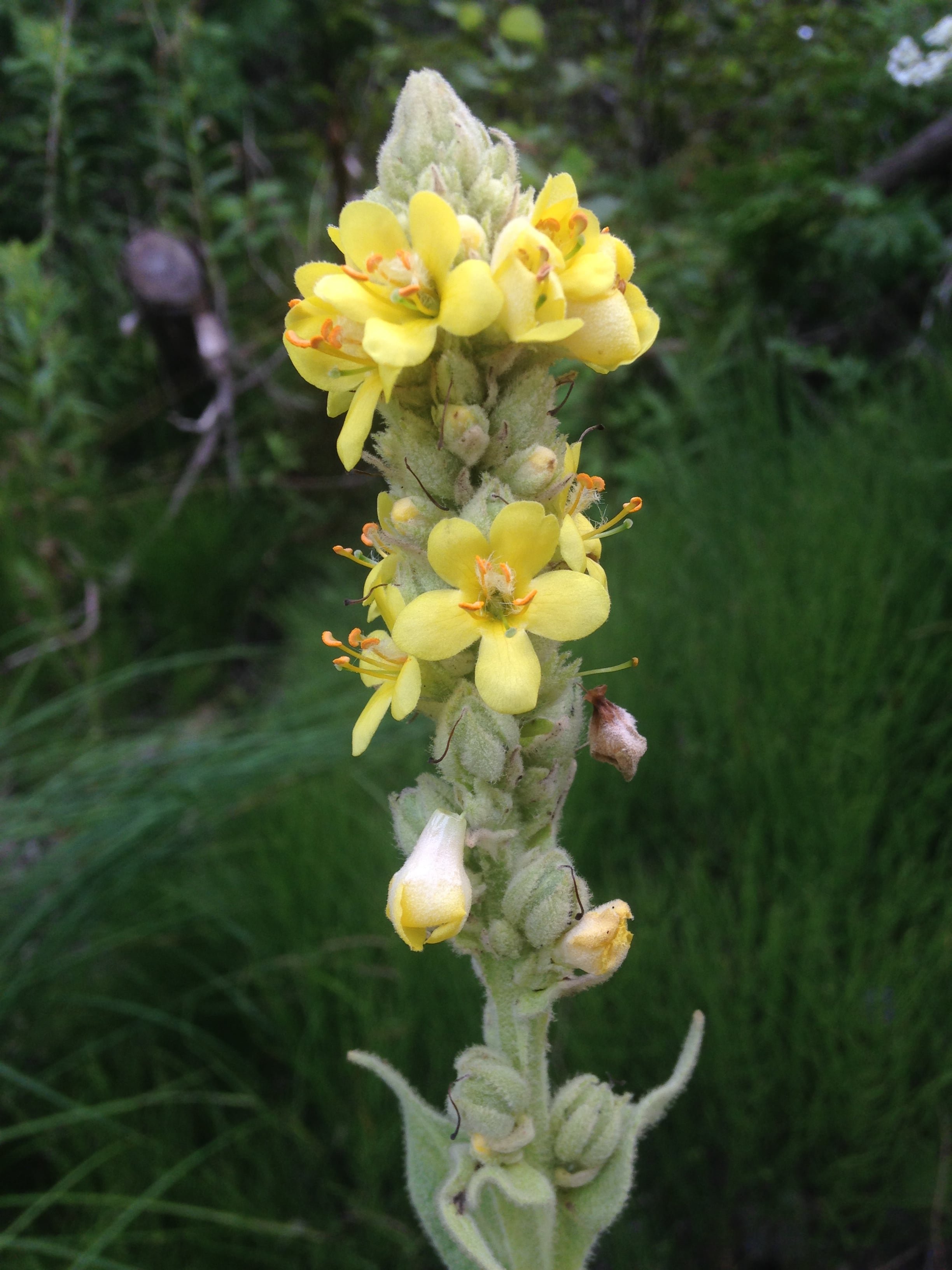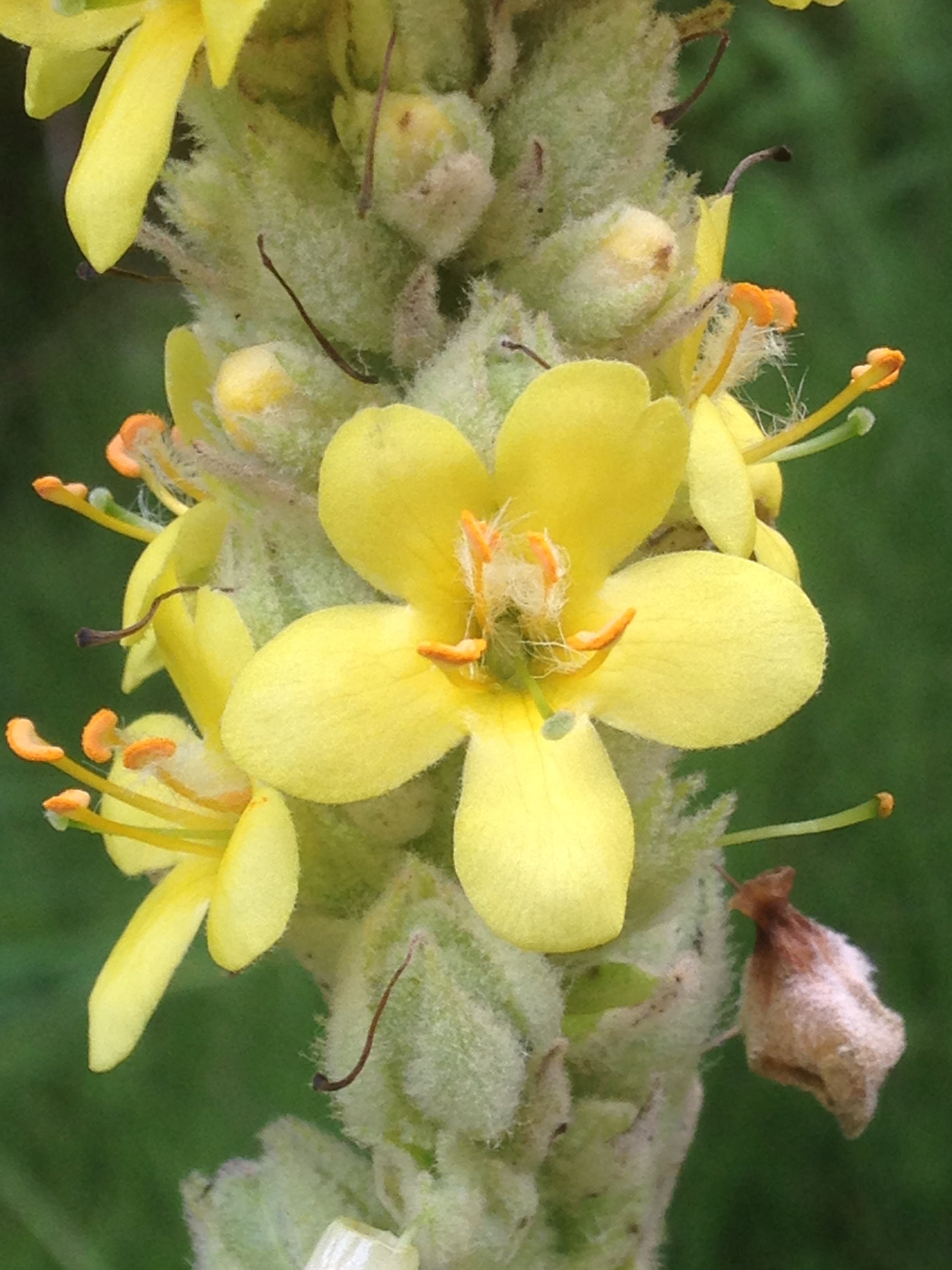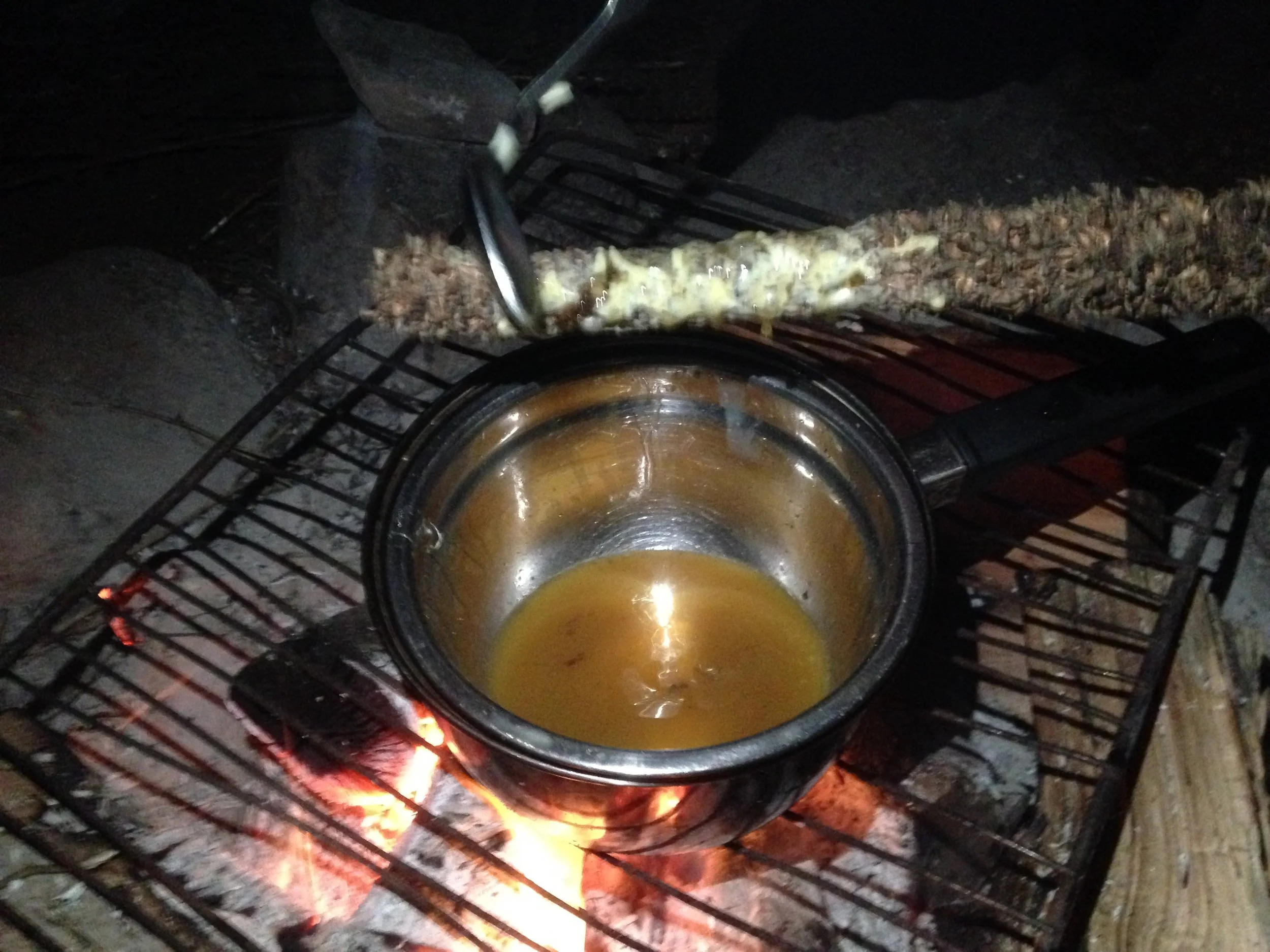Materia Magica for Mullein (Verbascum thapsus)
What is a Materia Magica you ask? I guess it is bit of a cultural history of diverse not-so-physical uses of a plant. You’ve likely heard of a Materia Medica, you know, the notes describing the medicinal uses over time of a specific plant? This is like that, but less mundane.
Latin name : Verbascum thapsus
Classification :
Kingdom : Plantae - Plants
Subkingdom : Tracheobionta - Vascular plants
Superdivision : Spermatophyta - Seed plants
Division : Magnoliophyta – Flowering plants
Class : Magnoliopsida - Dicotyledons
Subclass : Asteridae
Order : Scrophulariales
Family : Scrophulariaceae or Figwort family
Genus : Verbascum
Adam’s Flannel, Lady`s flannel, Lady`s candle, Our Lady`s taper, Lady`s candle stick, Virgin Mary`s candle, King’s candle, Candlewick, Torchwort, Hedge taper, Hag`s Taper, Witches' taper, Jupiter’s Staff, Jacob’s staff, St. Peter's staff, Aaron’s rod, Shepherd’s club, Clown's lungwort, Quaker Rouge, Moth Mullein, Donkey's ears, Hare's beard, Rag paper, Beggar’s Blanket, Feltwort, Velvet plant, Velvet Dock, Woolly Mullein, Common Mullein and many many more.
From Newcomb’s Guide to Wildflowers by Lawrence Newcomb :
Coarse, woolly plant with a dense spike of yellow flowers. Flowers ¾ - 1'' wide, slightly irregular. Noes for its large (4 - 12'' long), soft-velvety, oblong leaves, the largest ones in a basal rosette. Leaves sometimes slightly toothed. 2 - 8' high. Fields and roadsides; very common. Summer and Fall. Figwort Family.
Verbascum derives from an old Roman city name, though some feel it is a corruption of the name “barbascum”, meaning “with beards”, denoting the hairy texture of the stalk and leaves. Mullein comes from the old French “moleine”, itself deriving from the latin “mollis”, which means soft. Could soft beard be a new addition to the long list of common names for this fuzzy plant?
Mullein is ruled by Mercury (according to Agrippa) or Saturn (according to Culpepper). Saturn, the planet of evil, who ruled all poisonous herbs and plants of ill repute that were employed by the followers of the devil. This may tie into the varied and profound magical uses of the plant. Although associated with Saturn, Mullein also carries the name Jupiter's staff as it is associated with this particular god. As far as elemental associates go, Mullein is most definitely aligned with fire. The Greeks used to call it “flego”, or “fluma”, in other words, “to set on fire”. Witches torch, candlewick, king's candle all announce this affinity.
Mullein is an ancestor plant: resilient and proud, but often unnoticed or uncared for in our culture, as our ancestors often are. Grows in disturbed soils, drawing up minerals from the depths and dropping them back onto the often rocky or sandy soils, bereft of nutrients, to help new seeds to grow. Some authors have associated Mullein with courage, as it was the plant Mercury gave to Ulysses to ward off Circe's evil. Also, an old anglo-saxon note declares :
“If one baereth with him one twig of the wort, he will not be terrified with anyone, nor will a wild beast hurt him, or any evil coming near. He dreadeth not any robber, but the wort puts them all to flight.”
- Thomas Oswald Cockayne“Leechdoms, Wortcunning, and Starcraft in Early England”, 1864.
Perhaps we can also link it to courage as it stands tall among the fields, flowering head held high, blowing in the wind. Courage, and also protection. The yellow five-petaled flowers of the Mullein open one by one, spiralling up the stalk from late June until early September. Glowing eyes, ever watchful, towering above the grasses and low lying herbs. Mullein could be considered a lookout tower, a whirling panopticon, but instead of serving the powers of control, coercion and confinement, Mullein is wild, watchful, and weedy, ever growing where it is not supposed to grow.
If these beautiful watchful yellow flowers happen to close before being pollinated, the action of the closing flower will trigger a self pollination process (“autogamy”, or “delayed selfing”), ensuring that the independent plant will produce necessary seed capsules, some 200 or more, each containing 200-500 hundred seeds, pollinators or not. Do the math and it works out to be 40,000-100,000 seeds per plant! Seeds for many more generations of Mullein to grow and prosper down the line.
From Botany In A Day by Thomas J. Elpel :
Mullein is a popular medicinal herb imported from Europe. It grows in disturbed soils all across North America. Mullein has sedative, astringent, mildly mucilaginous properties. The leaves can be smoked or made into tea to relax the bronchioles in the initial stages of an infection. A tea of the root is diuretic and astringent for th urinary tract (Moore). A strong tea or dry powder of the leaves can be applied to a wound as an effective astringent (Brown). The small amount of mucilage makes the tea useful as a demulcent to soothe a sore throat. The blossoms and seeds also contain a small amount of saponin, useful for temporarily paralyzing fish.
Mullein stalks stand tall amidst the wind, the cold and the rain. These stressors may actually be welcome to the plant. Mullein can be served by these forces by helping to spread its seed as if they are left alone, the seeds only tend to fall about 3 feet from the top of the torches’ taper. But once the seed is spread by weather, or by human encounters (especially children who like to hit the stalks as they walk by), they remain long prepared to germinate as they can remain viable for up to 100 years or more; even archaeological soil samples dating from 1300 have produced viable Mullein seeds. Seeds are also known to numb, or stun fish when thrown into water, as they contain rotenone. Perhaps the seeds of Mullein could also be carried as a talisman to counter “fishy” doings, or other obscured uncertain behaviours, revealing the truths behind it all. We can also call on Mullein to help replenish the soil in our lives. Using Mullein to reach deep into our ancestral roots and calling in some healthful guidance, wisdom and knowledge drawn up from the stone and bone down down below and scattered about as the leaves and plants die back in the colder months of the year.
All these point to a generative ancestral drive, working hard now on behalf of the future offspring, future plans, and future responsibilities to the communities around the wooly staff. Producing thousands of seeds, to preparing the soil for other successional plant inhabitation, to meeting its own needs in case others cannot provide (but always allowing others the opportunity to help first before going it alone).
All in all, Mullein reminds me of the wise widowed witchy granny teaching her grandchildren how to grow the food they will need to remain healthy, then demonstrating canning, dehydrating and food preservation in preparation for the times of lack. She is the forebear of many, providing the tools and resources for a healthy future. Let's remember our forebears as highly as we regard the tall proud Mullein now.
A fun Mullein craft: The Mullein Torch
Find a suitably dead Mullein stalk, and break it from the base of the stalk, or pull up the whole thing, root and all from the ground. If you’d like to propagate the Mullein, be sure to gently beat the remains of the flowers so seeds can fall out.
Next melt some beeswax. I like to do this in a double boiler kind of set up, with the beeswax in a tall narrow glass for dipping, or a broad bowl suitable for ladling out the wax.
Once the wax has melted, begin either dipping or ladling the wax over the flowering end of the Mullein stalk. Dip or ladle and then let cool for a moment, then dip and ladle again. When wax has cooled to the touch I like to compress it by gripping the waxy end. Then, dip or ladle again. Continue this process making a long thick waxy candle tip.
When the stalk has been thoroughly waxed and cooled then you are ready light it. Light the tip with a candle or fire (avoid lighters as it can take a minute). There may be some sputtering and a possible extinguishing, but just be patient and try again. Eventually it will light. Once lit, hold the torch upright and away as the wax does drip and could burn sensitive hands.
My longest burn was 45 minutes, which is long enough for a parade, or a decent ritual/ceremony. Perfect for the dark season.






